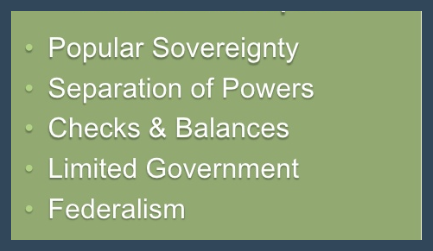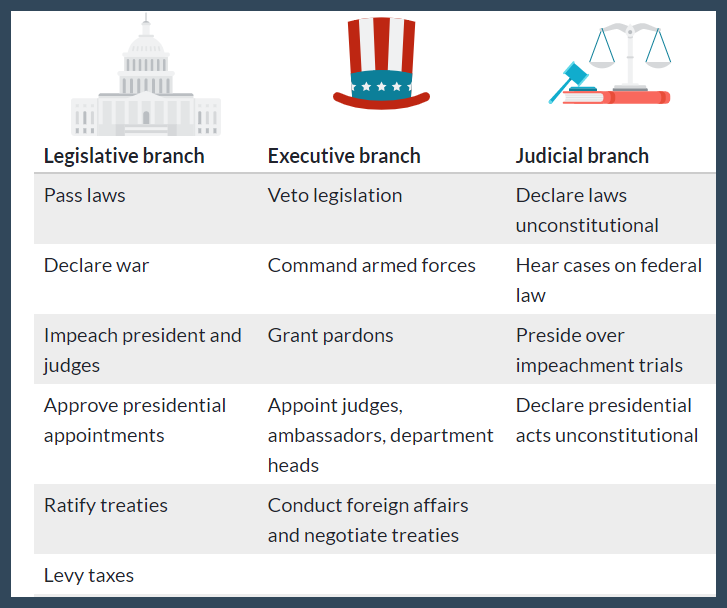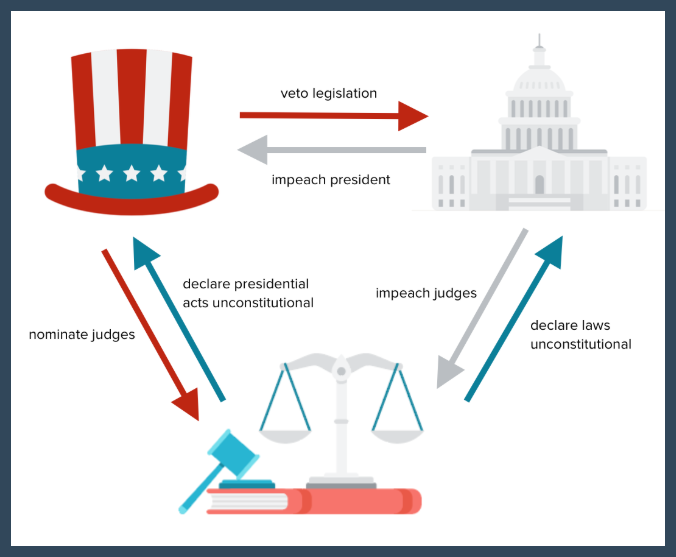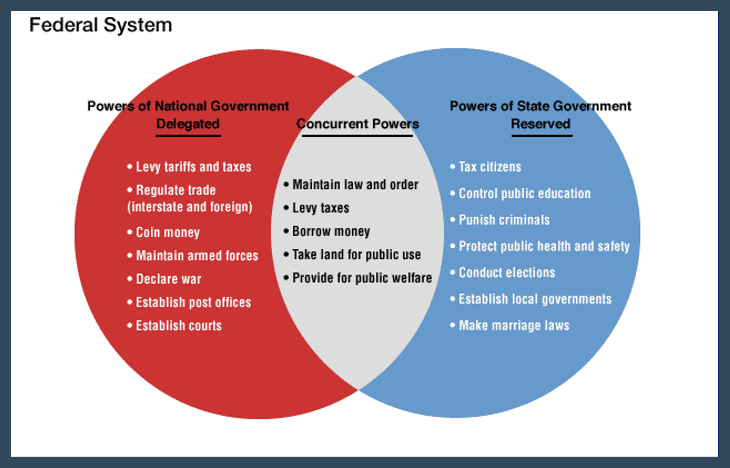Basic Principles of the Constitution

Unit Overview
In this
unit, students will explain the basic principles of the United States
Constitution, which help define our government. (CS #5).
Section A: Content Statement 5
Content Statement #5
Basic principles which help define the
government of the United States include:
• popular sovereignty;
• limited government;
• federalism;
• separation of powers; and
• checks and balances.
Popular sovereignty is the
principle that governmental authority is derived from the people. Under this
principle, the government governs with the consent of
The
principle of limited government
holds that a government can only exercise the powers granted to it. The government
must be conducted according to the
Federalism is a system in which power is divided between national and state governments.
The principle of separation of powers requires a distribution of governmental powers among independent branches.
Checks and balances constitute a system for controlling government power.
Let’s Practice: Basic Principles
Section B: Basic Principles
The basic
principles helped define the government of the United States. These principles
are popular sovereignty, limited government, federalism, separation of powers,
and checks and balances.
|
Popular Sovereignty |
Power to govern belongs to the people |
Government must be based on the consent of the governed |
|
Separation of Powers |
Division of government’s powers into three separate branches |
President – executive Congress – legislative Supreme Court – judicial |
|
Checks and Balances |
Each branch of government has some control over the others |
Keeps each branch of government from overstepping its bounds |
|
Limited Government |
Guarantees that the government does not hold all the power |
The rule of law |
|
Federalism |
Division of governmental power between the national government
and state government |
Expressed – federal only Reserved – state only Concurrent - share |
Let’s Practice: Which Principle
The power of
the U.S. government is constrained by the separation
of powers and checks and balances
between branches. The Framers of the U.S. Constitution structured the
government so that the three branches have separate powers. The branches must
both cooperate and compete to enact policy.
Each of the branches has the
power to check the other two, which ensures that no one branch can become too
powerful and that government as a whole is constrained.
Below is a
chart on the Separation of Powers of
the branches of government.

Let’s Practice: Which Branch?
In addition
to separating powers among the branches, the Framers gave each branch the power
to check, or stop, the actions of the other two branches in meaningful ways. This
system of checks and balances keeps
each branch of government from overstepping its bounds, and consequently, the
federal government itself from becoming too powerful.
Below is a
chart on the Checks and Balances of the
branches of government.

Let’s Practice: Checks and Balances
Below is a
chart on Federalism.

Let’s Practice: Federalism